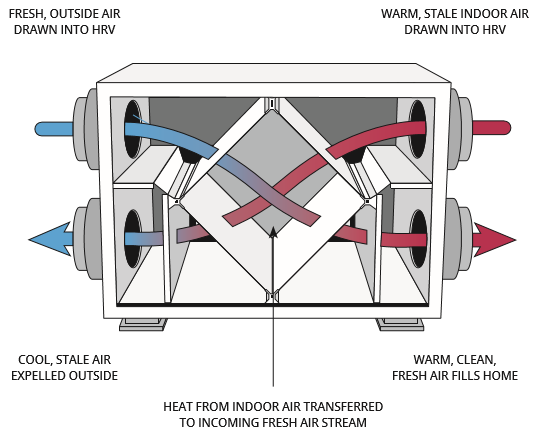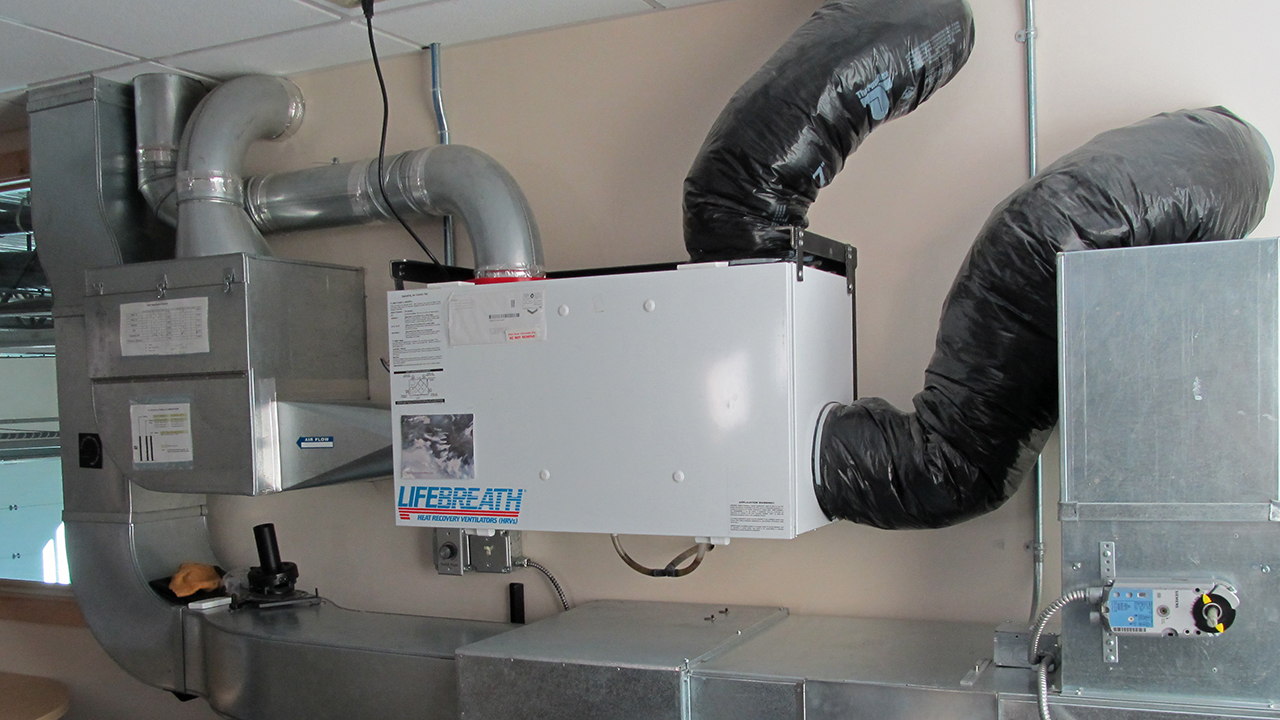Top FAQs About HRV Clarified
Wiki Article
Just How Heat Recovery Ventilation Boosts Indoor Air Quality and Reduces Energy Expenses
Heat Recovery Ventilation (HRV) systems play a vital duty in improving interior air top quality while all at once lowering energy expenditures. By successfully exchanging stale indoor air with fresh outdoor air, HRVs help keep perfect humidity and decrease pollutants. Additionally, their ability to recoup heat from outbound air decreases the strain on home heating and cooling systems. As power costs remain to increase, recognizing the full capacity of HRV systems ends up being significantly essential for homeowners and services alike.Recognizing Heat Recovery Ventilation Systems

Heat recovery ventilation (HRV) systems play a vital role in boosting indoor air quality, particularly in modern, energy-efficient structures. These systems are created to transfer warm from the outward bound stagnant air to the inbound fresh air, thereby minimizing power loss while preserving ideal temperature level levels indoors. HRVs are composed of a warm exchanger, followers, and ductwork, helping with the continuous blood circulation of air. By eliminating indoor contaminants and introducing fresh air, HRVs help to balance moisture degrees, stop mold and mildew development, and minimize irritants. The performance of HRV systems hinges on their capability to recover approximately 80% of the warmth from the tired air, promoting energy conservation while making sure a healthy and balanced indoor environment. Their assimilation is vital in accomplishing sustainable living practices.
The Value of Indoor Air High Quality
Indoor air quality (IAQ) is a critical factor affecting the health and wellness and wellness of occupants in any type of setting. Poor IAQ can bring about various wellness issues, consisting of respiratory system troubles, allergies, and fatigue. Furthermore, it can aggravate status quo such as asthma. Elements adding to low IAQ consist of pollutants from interior resources like cleansing agents, mold and mildew, and poor ventilation. Maintaining good IAQ is essential for promoting a safe and comfortable living or functioning space. Efficient strategies to enhance IAQ involve regular monitoring of air high quality, proper air flow systems, and minimizing making use of unsafe substances inside. By focusing on IAQ, individuals can guarantee a much healthier environment that fosters efficiency and general lifestyle.Energy Effectiveness Advantages of HRV Systems
Numerous house owners and structure supervisors are significantly recognizing the power performance advantages of heat recovery air flow (HRV) systems. By moving warmth from exhausted interior air to inbound fresh air, HRV systems significantly lower the energy required for cooling and heating. This procedure decreases reliance on traditional cooling and heating systems, bring about reduced energy expenses. Furthermore, HRVs help maintain a balanced indoor environment, protecting against extreme heating or cooling down demands. The capability to recuperate approximately 90% of the warm from outgoing air also supports sustainability efforts by minimizing general see energy usage. As a result, HRV systems contribute not just to set you back financial savings yet also to a minimized carbon impact, lining up with the expanding emphasis on energy-efficient structure techniques.Installation and Upkeep Considerations
The effective implementation of warmth recuperation ventilation (HRV) systems requires mindful consideration of installation and upkeep variables to guarantee peak performance. Proper positioning of the HRV unit is essential, as it needs to be mounted in an area that maximizes airflow while lessening sound disturbance. In addition, ductwork should be suitably sized and protected to stop power loss. Routine maintenance, consisting of filter replacement and system cleaning, is important to secure ideal functionality and interior air high quality. Proprietors need to establish a routine upkeep timetable to recognize and resolve possible issues prior to they escalate. Partnership with skilled experts during both installation and upkeep phases can enhance the durability and efficiency of HRV systems, ultimately causing far better interior settings and lowered power costs.
Real-World Applications and Success Stories
Discovering real-world applications of warmth recovery ventilation (HRV) systems discloses their you could try this out substantial impact on interior air top quality and energy efficiency across numerous setups. In property structures, property owners have actually reported better air high quality, leading to fewer allergic reactions and respiratory concerns. Schools applying HRV systems have actually kept in mind boosted pupil focus and lowered absenteeism because of much better ventilation. Business structures, such as offices and retail areas, have experienced lower power expenses and raised worker performance. For circumstances, a corporate office in a pleasant climate achieved a 30% decrease in power costs after mounting an HRV system. These success tales show that HRV modern technology not just adds to healthier environments yet likewise supplies tangible monetary advantages, making it a valuable financial investment for numerous fields.Frequently Asked Questions
Can HRV Systems Reduce Allergens in Indoor Air?
The efficiency of HRV systems in reducing interior irritants largely rests on their ability to filter and exchange air. HRV Heat Recovery Ventilation. By constantly replacing stale air, these systems can considerably lower allergen levels throughout interior settings
How Does Moisture Affect HRV System Efficiency?
Humidity significantly affects HRV system efficiency; high degrees can cause condensation, minimizing performance, while low moisture may boost air exchange. Stabilizing moisture is blog here necessary for perfect procedure and keeping indoor air quality.Are HRV Systems Noisy During Operation?
HRV systems can produce differing noise levels throughout operation, relying on their design and installation. Some units operate quietly, while others might generate obvious audio, specifically at higher air flow settings or when poorly preserved.What Is the Average Lifespan of an HRV System?

Can HRV Equipments Be Used in All Environments?
HRV systems can be made use of in different climates, however their efficiency might differ - HRV Heat Recovery Ventilation. In extreme temperature levels, adjustments or extra systems may be essential to guarantee excellent efficiency and comfort while maintaining indoor air top qualityReport this wiki page